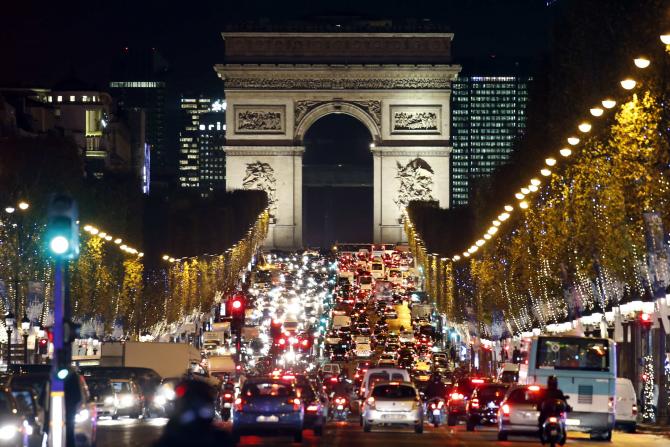Student: Nisarg Sheth
Paris is the capital and most populous city of France. Situated on the Seine River, in the north of the country, it is in the centre of the Île-de-France region, also known as the région parisienne, “Paris Region”. The City of Paris has an area of 105 km² (41 mi²) and a population of 2,241,346 (2014 estimate) within its administrative borders essentially unchanged since 1860. Since the 19th century, the built-up area of Paris has grown largely beyond its administrative borders: together with its suburbs, the whole agglomeration has a population of 10,550,350 (Jan. 2012 census), or 16.2% of the population of France. The administrative Paris Region covers 12,012 km² (4,638 mi²), and has its own regional council and president. It had a population of 12,005,077 as of January 2014 estimates.
Paris is the home of the most visited art museum in the world, the Louvre, as well as the Musée d’Orsay, noted for its collection of French Impressionist art, and the Musée National d’Art Moderne, a museum of modern and contemporary art. The notable architectural landmarks of Paris include Notre Dame Cathedral (12th century); the Sainte-Chapelle (13th century); the Eiffel Tower (1889); and the Basilica of Sacré-Cœur on Montmartre (1914). In 2014 Paris received 22.4 million visitors, making it one of the world’s top tourist destinations.

Place_de_la_République
Late in the 19th century, Paris hosted two major international expositions: the 1889 Universal Exposition, was held to mark the centennial of the French Revolution and featured the new Eiffel Tower;
Over here, as described we saw that during late 20th century one of the best monument – LA TOUR EIFFEL was constructed in order to raise the economy of the Paris and giving it a Platform for the tourism. Initially it was decided to be kept only for 20 years, after seeing its immense effect on economy of Paris they planned to keep the structure intact for ever.
The Eiffel Tower, La Tour Eiffel in French, was the main exhibit of the Paris Exposition — or World’s Fair — of 1889. It was constructed to commemorate the centennial of the French Revolution and to demonstrate France’s industrial prowess to the world.
World’s Fair centerpiece
Gustave Eiffel, a French civil engineer, is usually credited with designing the tower that bears his name. However, it was actually two lesser-known men, Maurice Koechlin and Emile Nouguier, who came up with the original drawings for the monument.
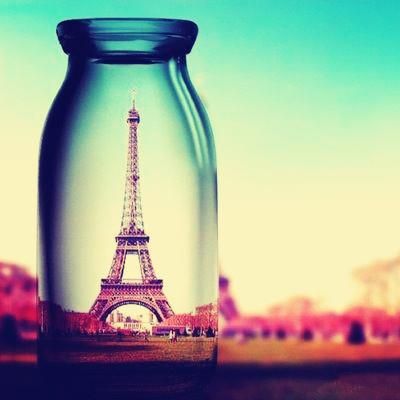
Kochlin and Nouguier were the chief engineers for the Compagnie des Etablissements Eiffel — Gustave Eiffel’s engineering firm. Together with Eiffel and a French architect, Stephen Sauvestre, the engineers submitted their plans to a contest that would determine the centerpiece for the 1889 World’s Fair in Paris.
The Eiffel company’s design won, and construction of the wrought iron tower began in July 1887. But not everyone in Paris was thrilled with the idea of a giant metal monument looming over the city.
When construction of the tower began on the Champs de Mars, a group of 300 artists, sculptors, writers and architects sent a petition to the commissioner of the Paris Exposition, pleading him to halt construction of the “ridiculous tower” that would dominate Paris like a “gigantic black smokestack.”
But the protests of Paris’ artistic community fell on deaf ears. Construction of the tower was completed in just over two years, on March 31, 1889.
The Eiffel Tower is still the centerpiece of Paris’ cityscape. More than 7 million people visit this iconic tower every year, according to the attraction’s . Since its opening in 1889, 250 million people from around the world have enjoyed all that the Eiffel Tower has to offer.
And it has a lot to offer. The tower’s three platforms are home to two restaurants, several buffets, a banquet hall, a champagne bar and many unique gift shops. Educational tours of the tower are available for children and tourist groups.
The Eiffel Tower was built by Gustave Eiffel for the 1889 Exposition Universelle, which was to celebrate the 100th year anniversary of the French Revolution. Its construction in 2 years, 2 months and 5 days was a veritable technical and architectural achievement. “Utopia achieved”, a symbol of technological prowess, at the end of the 19th Century it was a demonstration of French engineering personified by Gustave Eiffel, and a defining moment of the industrial era. It was met immediately with tremendous success.
Only intended to last 20 years, it was saved by the scientific experiments that Eiffel encouraged, and in particular by the first radio transmissions, followed by telecommunications. For example, the radio signals from the Pantheon Tower in 1898; it served as a military radio post in 1903; it transmitted the first public radio programme in 1925, and then broadcast television up to TNT more recently.
The Eiffel Tower in numbers. 300 workers, 18,038 pieces of wrought iron, 2.5 million rivets, 10,000 tons, 984.25 feet high.
At the time of its construction, the Eiffel Tower was the tallest building in the world. It wasn’t until 1930, when New York City’s Chrysler Building rose to 1,046 feet, that the tower lost that title.

La Tour Eiffel in 19th century

La Tour Eiffel In Construction
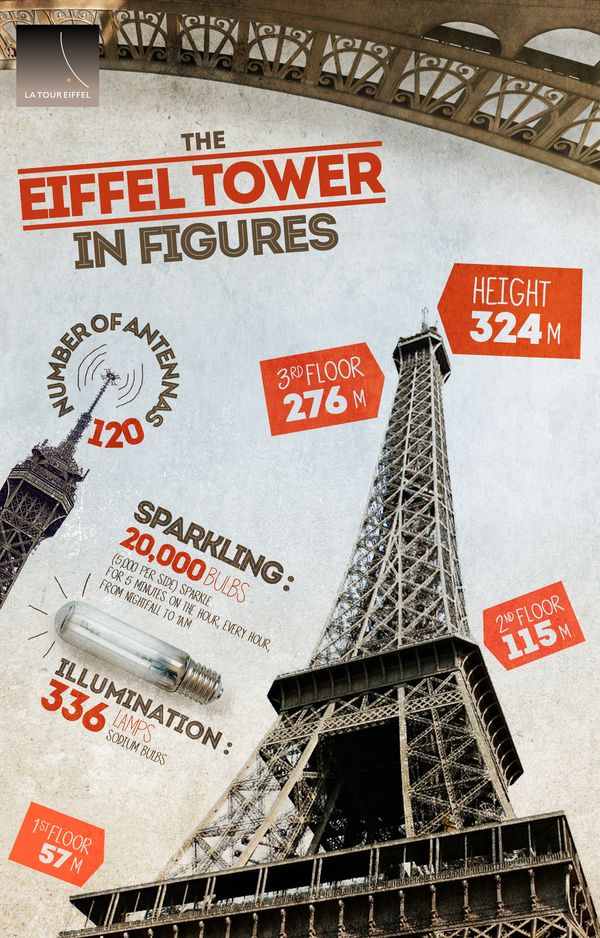
TOUREIFFEL-INfOGRAPHY
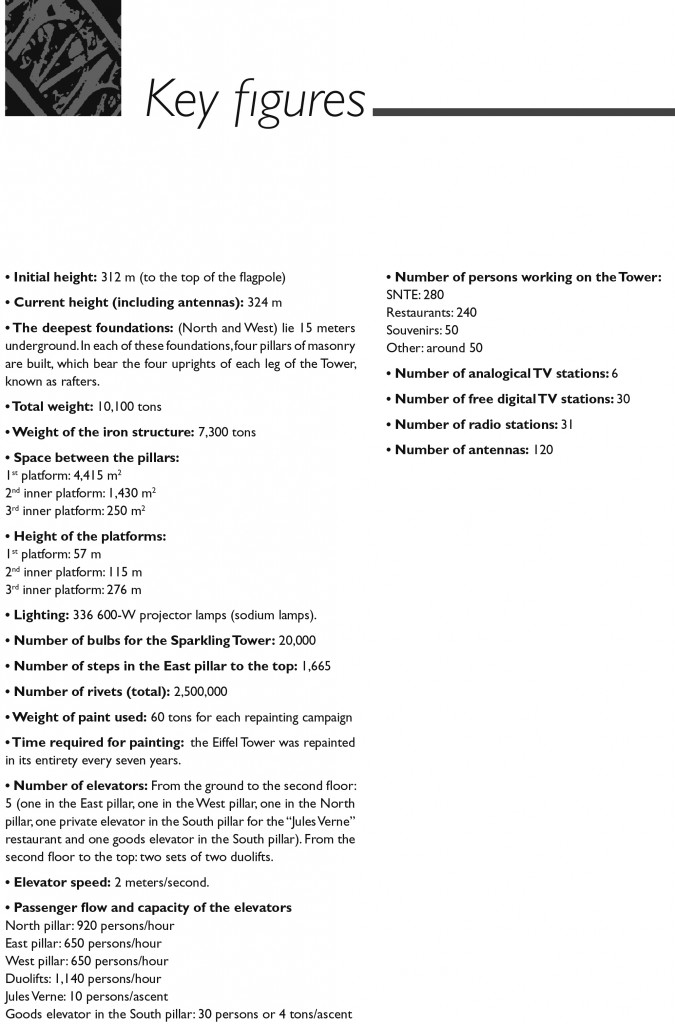
all_you_need_to_know_about_the_eiffel_tower
Every seven years, 50 to 60 tons of paint are applied. The new layers are needed to protect the tower from rust.
It is the most visited paid monument in the world. The tower attracts almost 7 million visitors every year, 75% of them from other countries.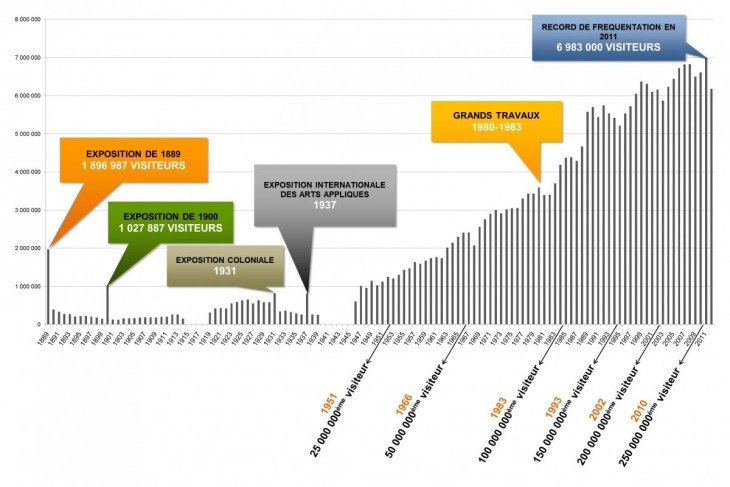

So, in the below graph you can see how the foreign investment in the paris started increasing after 20th century and this was all due to the French revolution in which the Greatest monument of that time was designed.
An increased number of visitors
In a press release, the Paris Ile-de-France committee notes that 2013 was consequently one of the best years for tourism. There were nearly 15.5 million foreign visitors, up 8.2% on 2012. This exceptional figure is the highest in 10 years.
Tourists from all over the world
Britons make up the greatest number, with more than 2.1 million staying at Paris’s hotels, followed by the Americans, Germans and Italians. For the first time, Chinese visitors have become the largest Asian group, with 881,000 staying in hotels (up 52.6%), ahead of the Japanese. A marked increase in the number of Middle Eastern hotel guests is also visible (up 20.7%).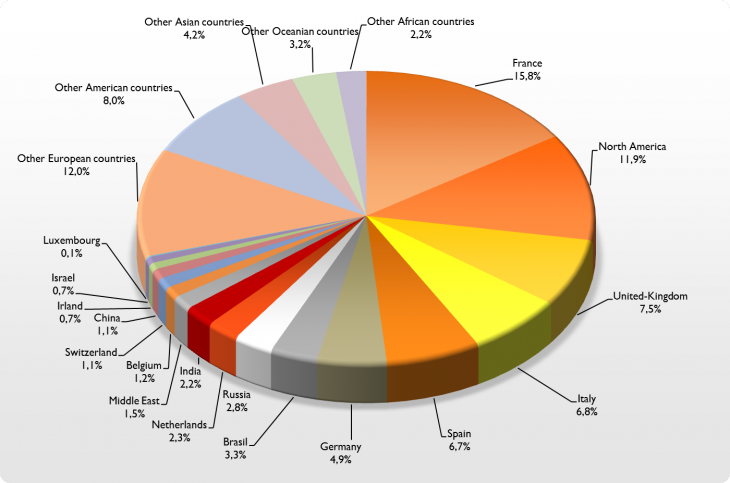
So from the above data we can conclude that, The Eiffel Tower is imposing in more than just stature, having been named Europe’s most valuable monument, dwarfing its nearest rival the Colosseum.
The Eiffel Tower: a subject of controversy
As is the case with many major architectural projects that today constitute part of France’s cultural heritage, the Tower has suffered the slings and arrows of detractors. Protest well predates the construction of such controversial structures as the Pompidou Center and the Louvre Pyramid. But time alone always proves the final judge – and in the case of the Eiffel Tower, the verdict has already been rendered. During construction, several personalities protested violently. On February 14, 1887 Le Temps published a manifesto signed by “personalities from the world of arts and letters”* railing against the construction of a 300meter tower on the Champs de Mars esplanade. Gustave Eiffel fought tooth and nail for his project, but the temperature of the heated debate just kept rising. A number of persons did later change their views and make amends. Sully Prudhomme, for example, expressed his admiration as early as 1889. Coppée waxed lyrical on the subject, and the Tower inspired Gounod to write a little “concerto in the clouds”.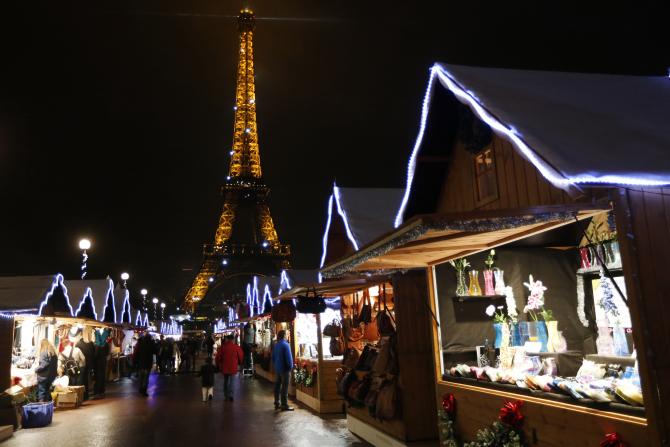
CONCLUSION:
Due to civil wars and a lot of destruction Paris had under gone its potential to survive through the daily crisis. So to increase their stability in every aspects they decided to take into consideration the tourism factor. As how they can invest in it and in return they will have a never ending income from the whole tourism industry.
This is where the idea of creating a landmark of the century came to show people their progress in civil engineering and creating the monument which will show their richness in knowledge in the field of engineering. Despite of all the crisis they planned to make a structure which was purely created out of wrought iron and would be a structural element serving as one of the leading tourist spot. Gustav Eiffel proposed few sketches of a tower which was given a great approval as they decided to keep it for just twenty years and after that they would dismantle it and use the materials in some construction as soon as their economy got stable.
After the approval the work on Eiffel tower proposal got accepted in 1886 and by 1889 the tower was ready after a hard efforts for 2 years, 2 months and 5 days was a veritable technical and architectural achievement.
For the first twenty years , it changed the face of the Economy of Paris and it turned out to be Sustainable by itself as the design was in the manner where the color and joints where designed taking into the consideration the sun path diagram. So even if the façade of the tower getting exposed to the building will give no harm to the entire structure. As per the data analysis around 1000 tons of wrought iron was used for the construction of the whole tower and for the aesthetic looks it was applied with the help of around 60 tons of paint.
Later on as the time passed the tower became the identity of the Paris city itself, and the government couldn’t dismantle it as it was one of the best tourism spot In Europe. So to keep the structure intact they had to maintain it as it was 20 years before. For that every seven year the tower is repainted with at least 60 tons of paint, which is a huge cost of keeping the structure intact.
Even though they take the revenue from each of the tourist entirely throughout the year it does not suffice the cost of maintaining it and eventually the government is losing its resources in maintaining the structure.
So The question is whether the architecture should be taken to such an extent that it becomes one of the element of crisis for the city itself to maintain it. There are lot of examples around the world facing the same problem, for example Golden Gate Bridge in San Francisco even this structure is facing the same problem. By the time the maintenance team finishes the repairing work of the bridge the starting point of the bridge is in need of repairs.
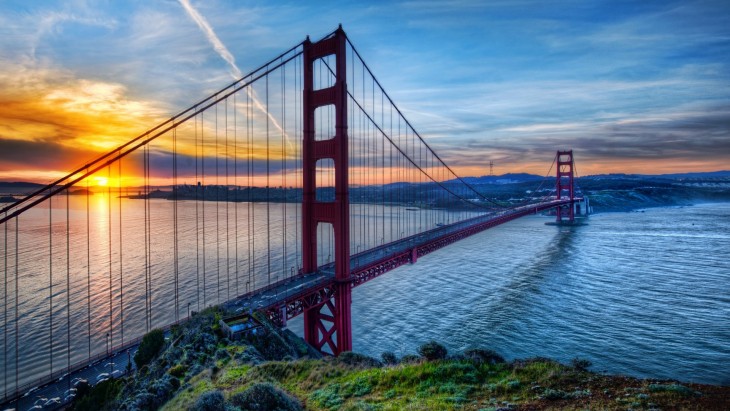
So how is architecture sustainable in terms of this construction and is there any solution for it?
REFERENCES:
-
http://metro.co.uk/2012/08/22/eiffel-tower-is-europes-most-valuable-monument-bringing
in-344bn-yearly-546162/#ixzz3uWpsli00
-
http://www.encyclopedia.com/topic/France.aspx
-
http://www.toureiffel.paris/en/everything-about-the-tower/the-eiffel-tower-at-a-glance.html
-
http://people.southwestern.edu/~bednarb/su_netWorks/projects/allen/eiffelparis.html
-
http://www.businessinsider.com/eiffel-tower-facts-2015-3
-
https://en.wikipedia.org/wiki/Tourism_in_Paris
-
http://www.ambafrance-ca.org/Paris-the-world-s-number-one
-
http://www.telegraph.co.uk/news/worldnews/europe/france/9492500/Eiffel-Tower-worth344-billion-to-French-economy-or-six-Towers-of-London.html
-
http://www.livescience.com/29391-eiffel-tower.html
